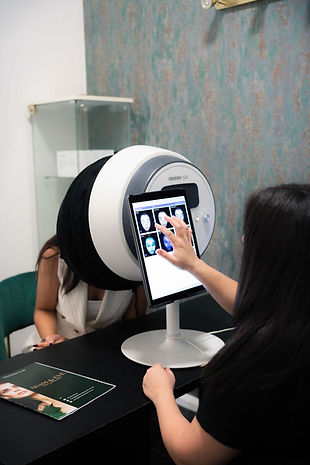
Acne Prone Skin
We understand that acne can be frustrating and persistent, which is why we offer specialised treatments targeting the root causes of breakouts. Our expert team customizes each plan to suit your specific skin type, helping to clear existing blemishes and prevent future flare-ups. With our approach, you can achieve a healthier, balanced complexion and regain your confidence.
ABOUT ACNE
ABOUT
Acne is a skin condition that develops when hair follicles become clogged with oil and dead skin cells, leading to the formation of whiteheads, blackheads, or pimples. While it’s most common in teenagers, acne can affect people of all ages. Though effective treatments are available, acne can be stubborn, with pimples and bumps often healing slowly—just as one clears up, another may appear. The severity of acne can lead to emotional distress and even scarring. Starting treatment early can help reduce the risk of these issues and promote clearer, healthier skin.
SYPMTOMS
Acne symptoms can differ based on the severity of the condition and may include: - Whiteheads (closed, clogged pores) - Blackheads (open, clogged pores) - Small red, tender bumps (papules) - Pimples (pustules), which are papules with pus at the tips - Large, solid, painful lumps beneath the skin (nodules) - Painful, pus-filled lumps under the skin (cystic lesions) Acne commonly appears on the face, forehead, chest, upper back, and shoulders.
Causes
Acne is caused by four main factors: - Excess oil (sebum) production - Clogged hair follicles due to oil and dead skin cells - Bacteria - Inflammation Acne commonly appears on the face, forehead, chest, upper back, and shoulders because these areas have the highest concentration of oil (sebaceous) glands, which are connected to hair follicles. When the follicle wall bulges, it forms a whitehead. If the plug remains open, it can darken, leading to a blackhead. Although blackheads may look like dirt trapped in pores, they are actually caused by a combination of bacteria and oil that turns brown upon exposure to air. Pimples, characterized by raised red spots with a white center, occur when blocked hair follicles become inflamed or infected with bacteria. Deeper blockages and inflammation can result in cyst-like lumps beneath the skin's surface. Sweat glands, which open through other pores, are generally not involved in acne. Certain factors can trigger or worsen acne, including: Hormonal changes: Androgens, hormones that increase during puberty, cause the sebaceous glands to enlarge and produce more sebum. Hormonal fluctuations during midlife, especially in women, can also lead to breakouts. Certain medications: Drugs containing corticosteroids, testosterone, or lithium can exacerbate acne. Diet: Research suggests that consuming certain carbohydrate-rich foods, like bread, bagels, and chips, may worsen acne, though more studies are needed to determine if dietary changes can benefit those with acne. Stress: While stress doesn't directly cause acne, it can aggravate existing acne conditions.

OUR RECOMMENDED TREATMENTS
SHOP ACNE SKINCARE

Prior to any skin treatment, it's essential to understand your skin's unique needs and challenges. Our comprehensive skin consultation featuring the Observ 520 skin analysis, a vital step in achieving your skincare goals.
With the Observ 520 skin analysis, we provide an in-depth assessment of your skin's condition, analysing various factors such as pigmentation, hydration levels, and sun damage. This advanced technology allows us to identify underlying issues that may affect treatment outcomes and tailor a personalised skincare plan to address your specific concerns. By gaining insights into your skin's health and characteristics, we can ensure that every treatment is precisely tailored to deliver optimal results.

























































